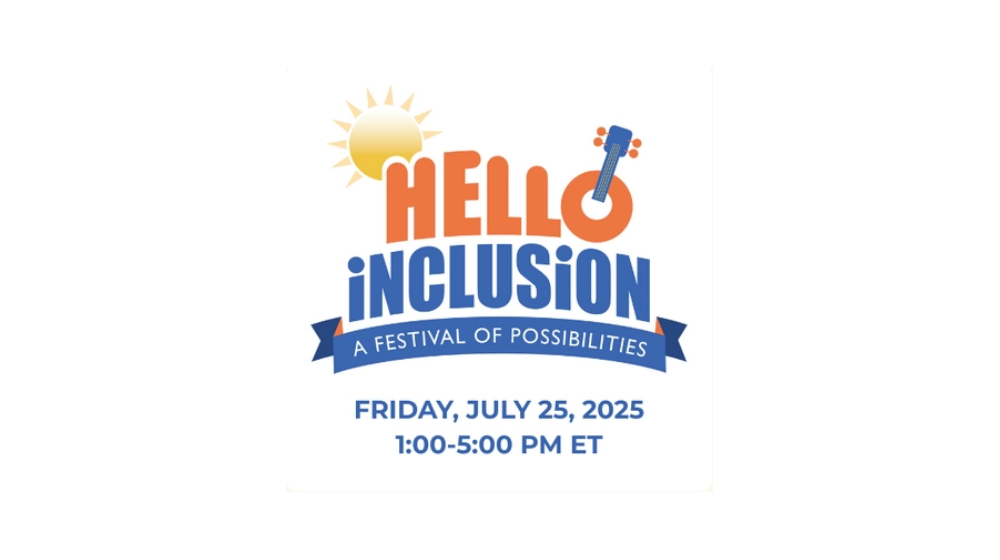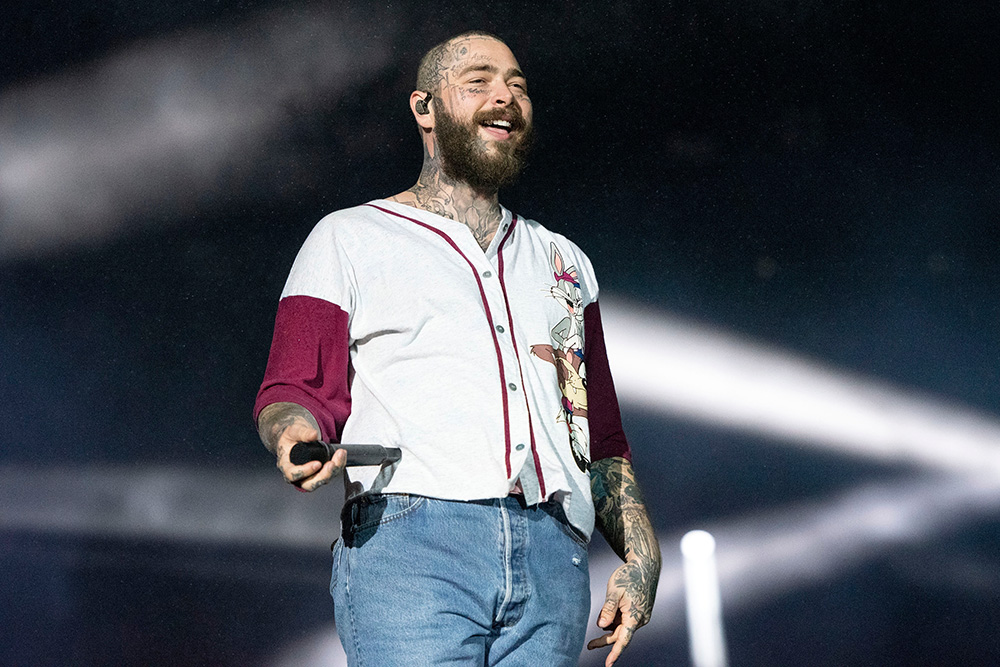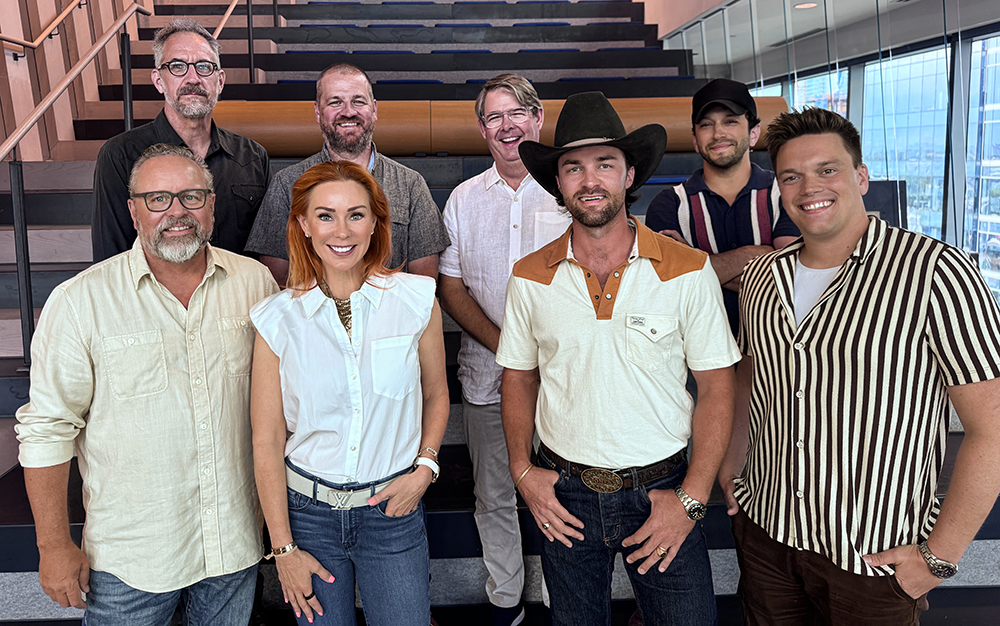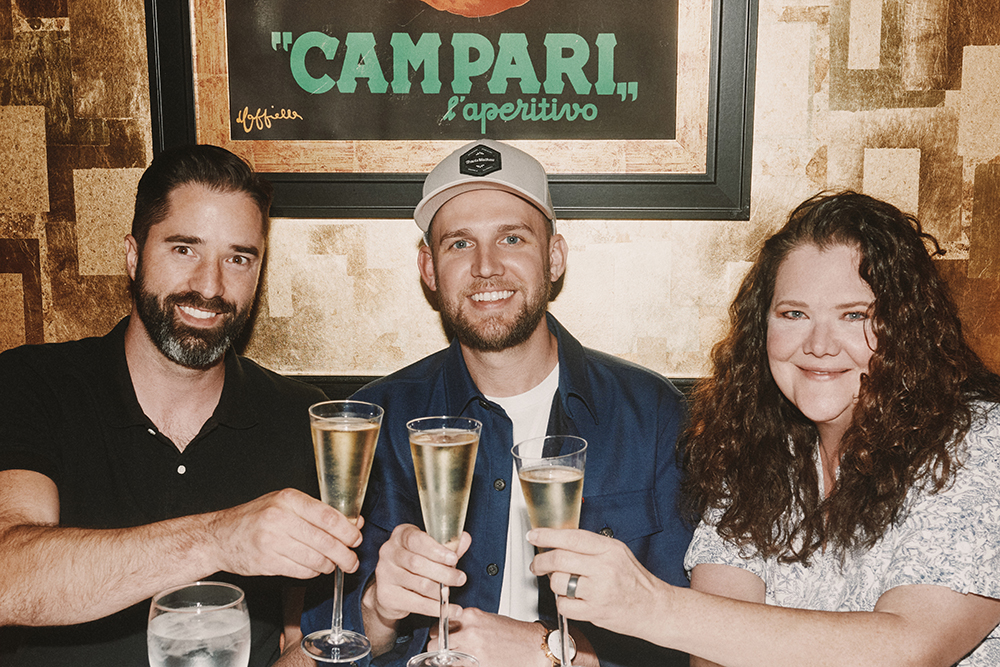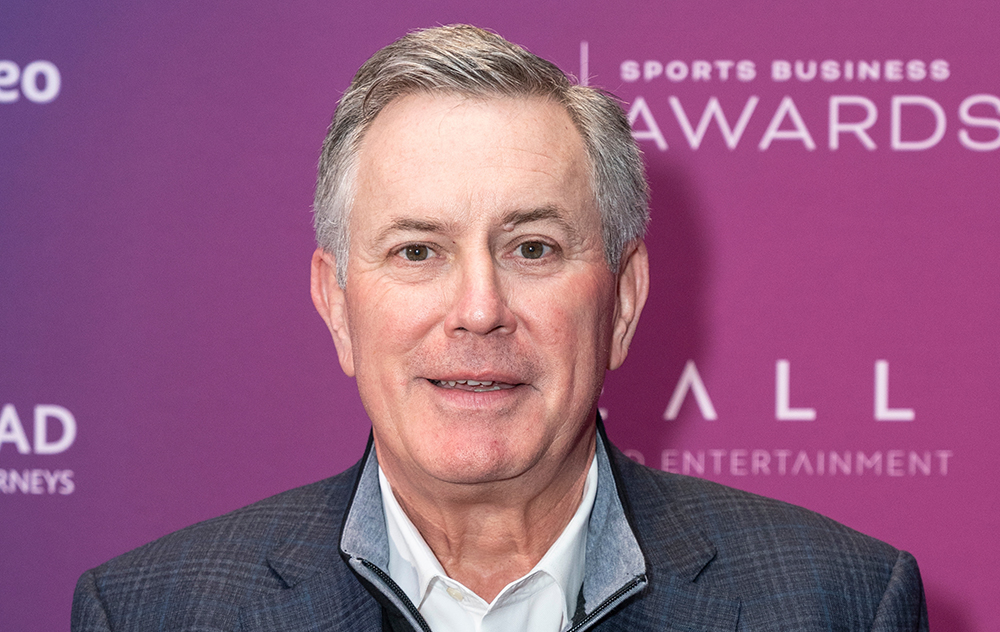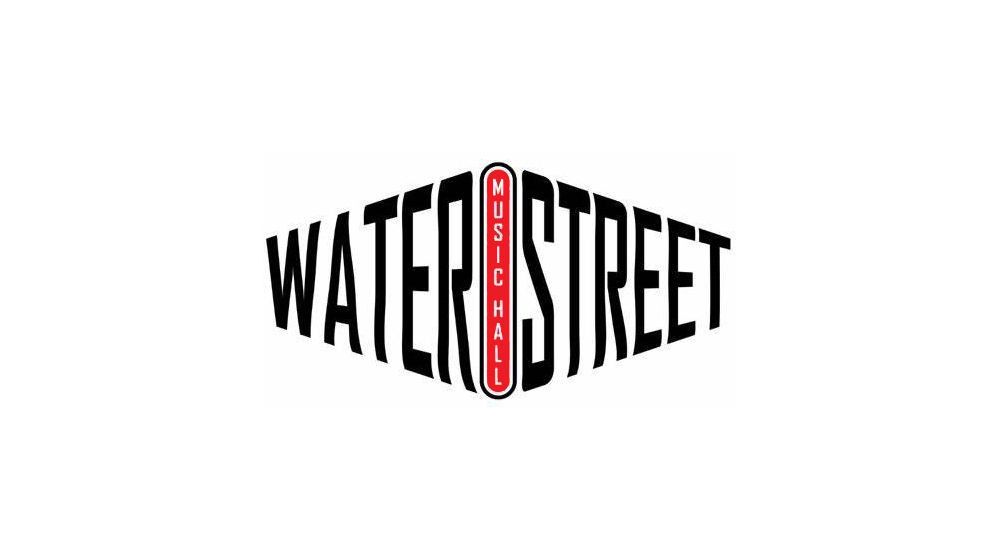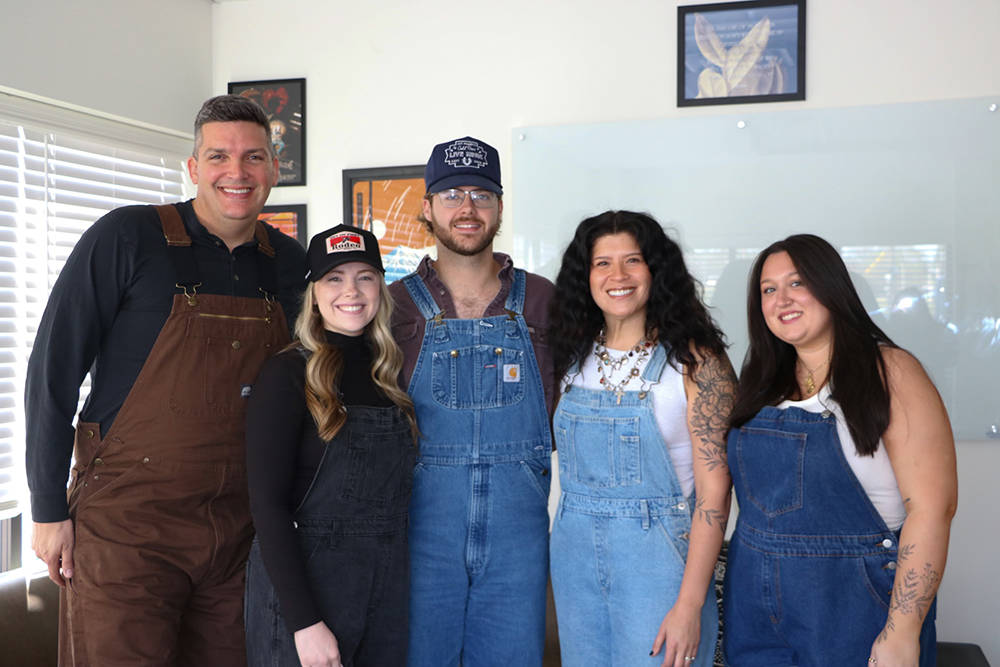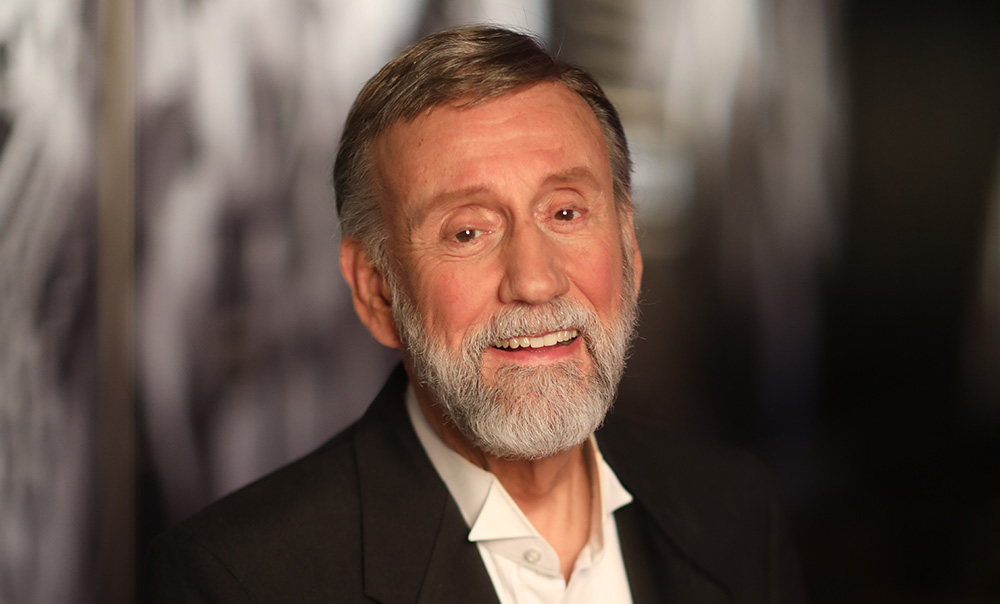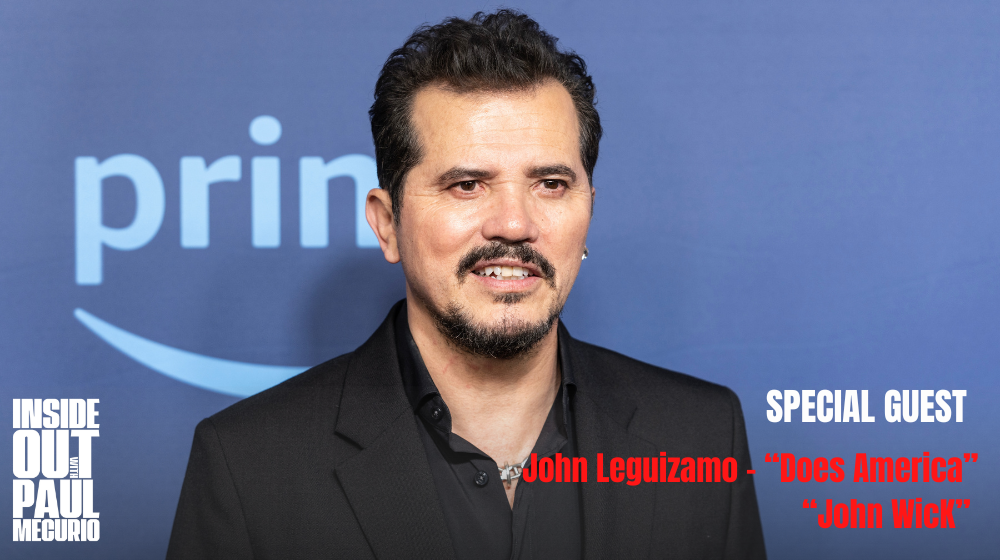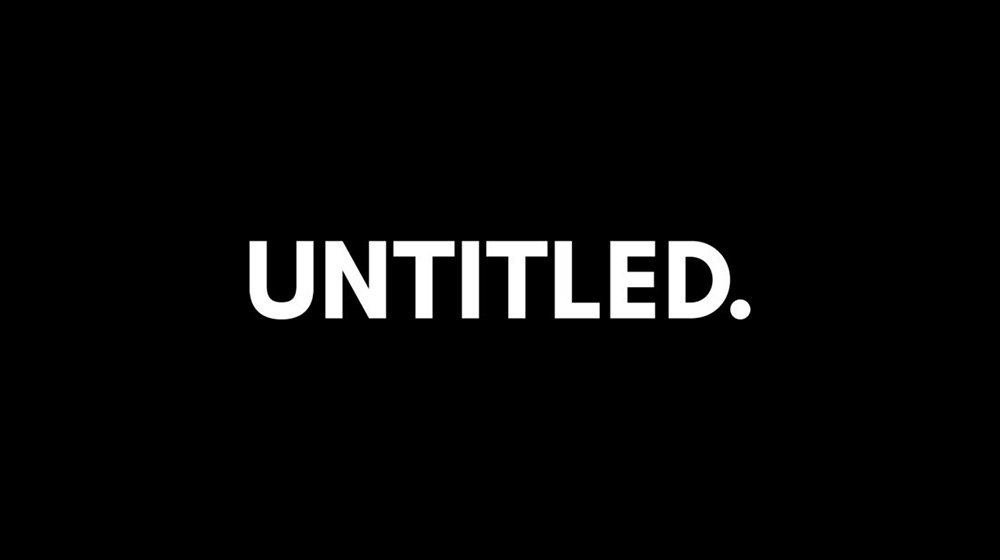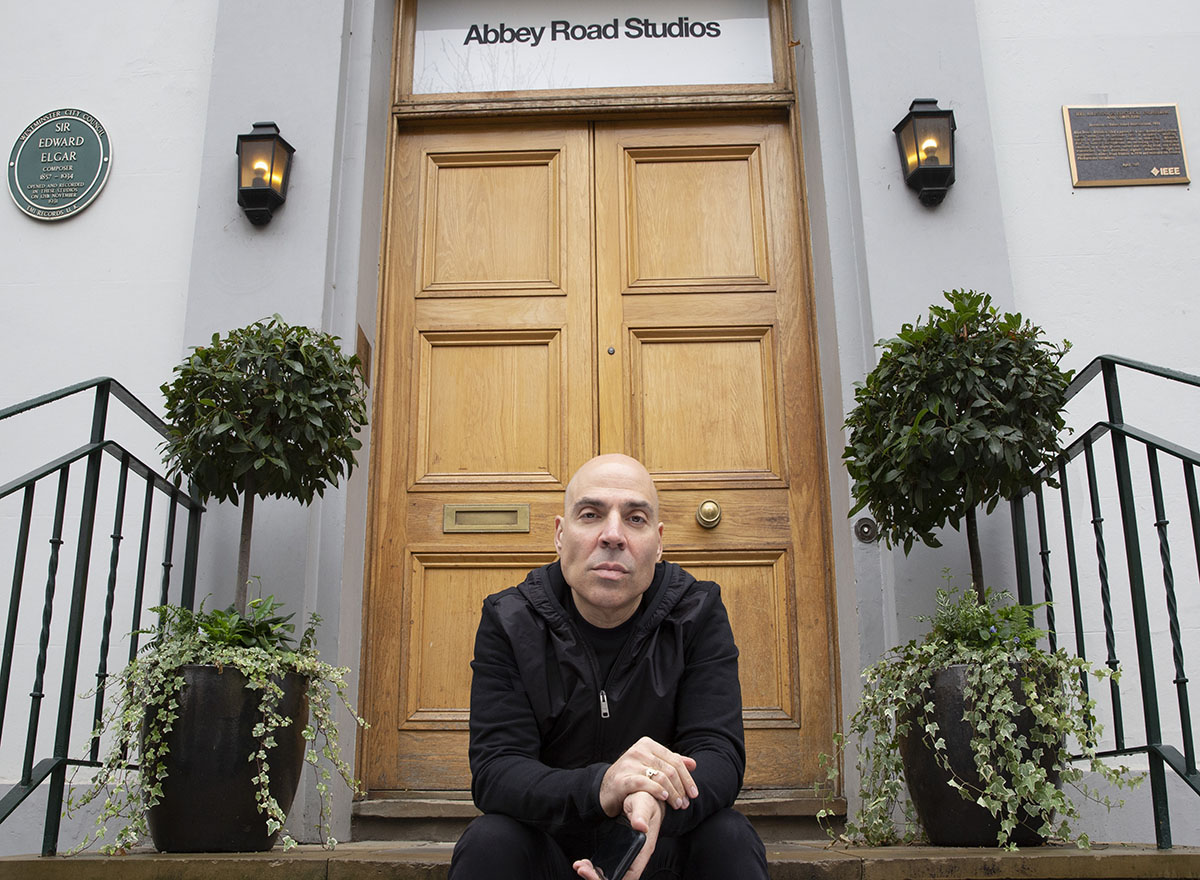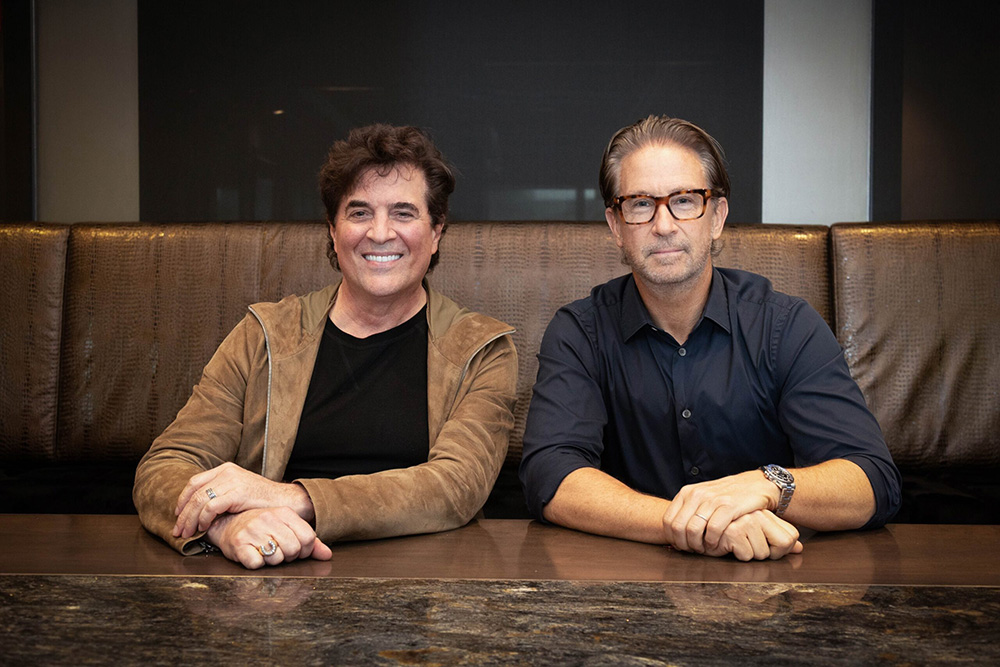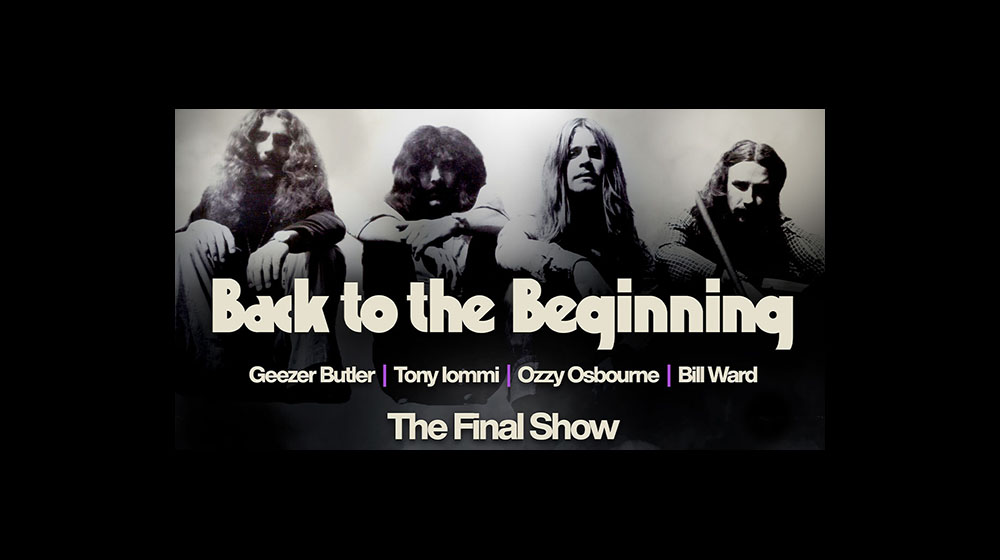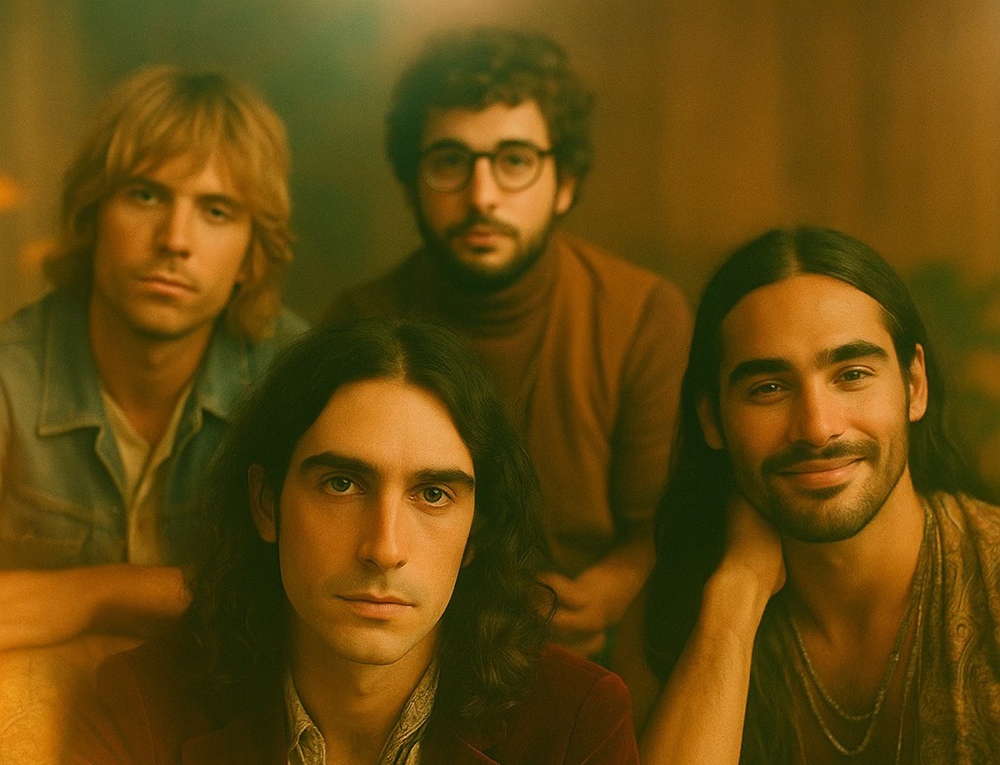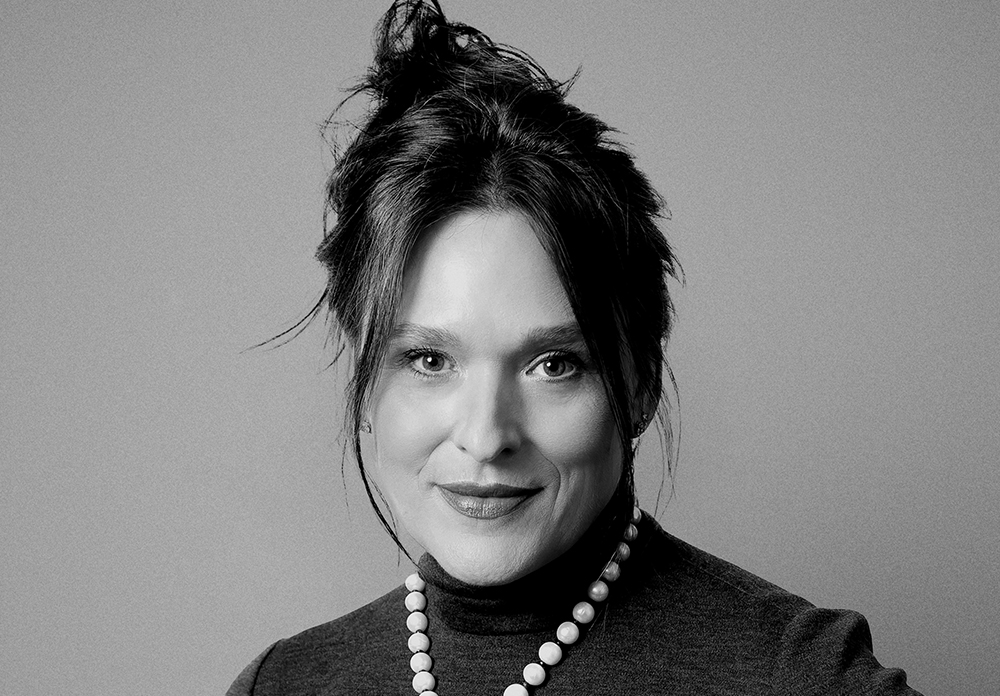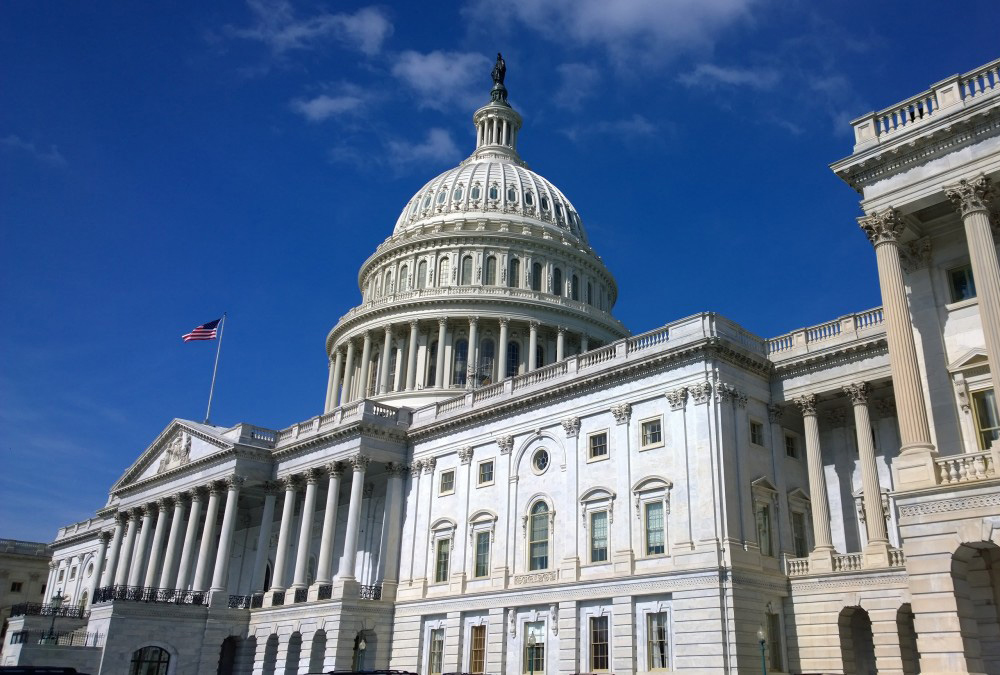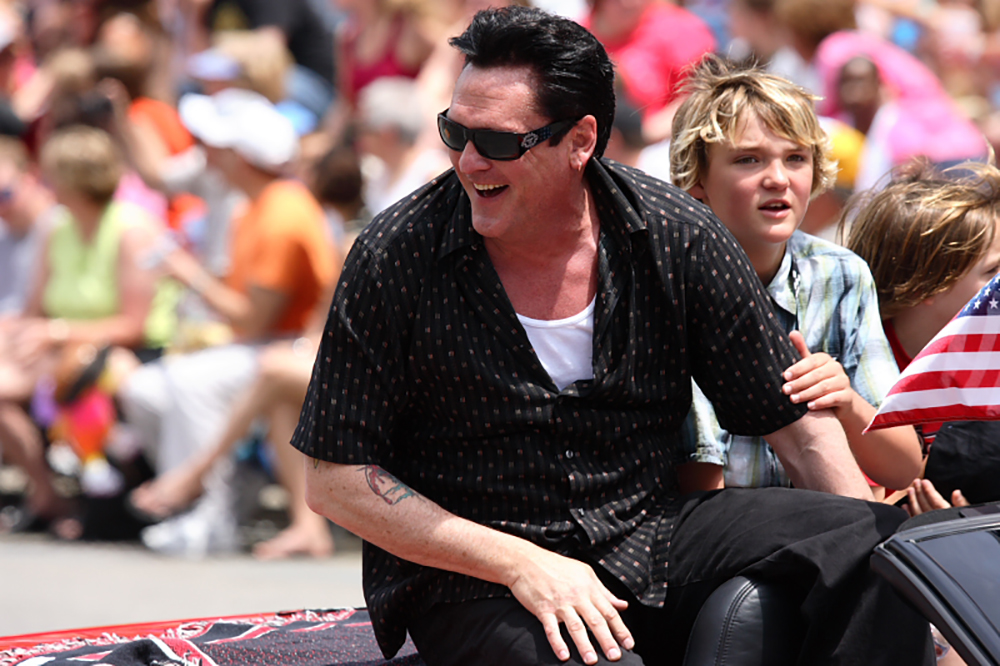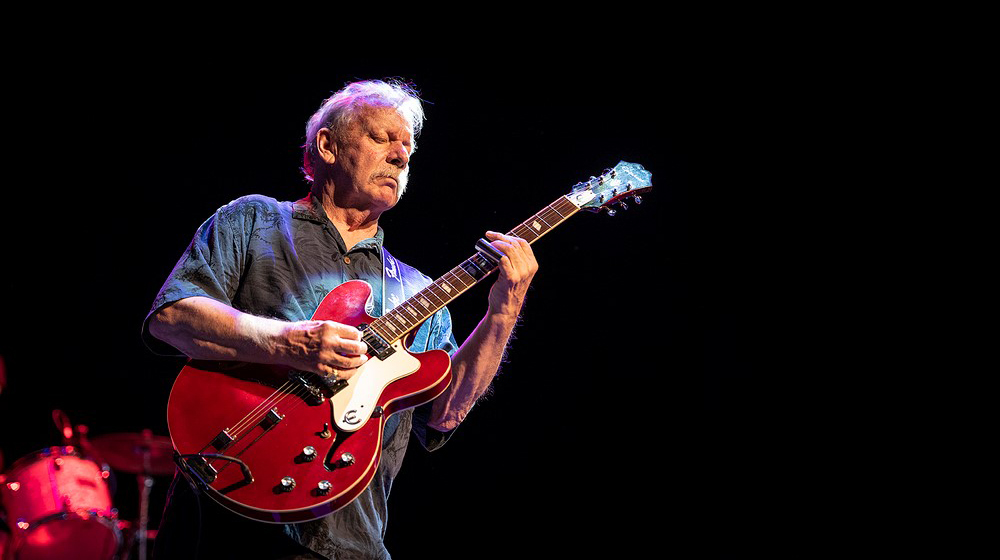This week In the Hot Seat with Larry LeBlanc: John Drury, professor of Social Psychology, University of Sussex.
Update: At least 125 people were killed and more than 320 have been injured in a stampede at a soccer match in Indonesia.
John Drury is recognized as one of the leading authorities on the science and study of crowds and collective behavior.
He is interested in all situations when people come together in a crowd, either to protest, go to a sports match or a festival, or if they get caught up in a mass emergency,
As a professor of Social Psychology at the University of Sussex in Brighton in England, he has published nearly 100 peer-reviewed journal articles, most of which are on crowds. With colleagues Steve Reicher and Clifford Stott, he developed the Elaborated Social Identity Model to explain the dynamics of conflict within crowd events.
Crowds are routinely struck off as near violent by authorities, but crowds are complex and sophisticated. The research of crowd psychology has demonstrated key differences between the behavior of physical crowds, where members are in the same place at the same time, and the collective behavior of psychological crowds, where the entire crowd perceives themselves to be part of the same group through a shared social identity.
Drury joined the faculty at the University of Sussex in 1998.
He completed his undergraduate degree in social psychology at the University of Sussex (1992) and completed his Master of Science degree (1993), and Ph.D. (1996) in psychology at the University of Exeter.
On completing his Ph.D., Drury worked as a research psychologist at the Trust for the Study of Adolescence1996-1998), providing research-based evidence about communication between young people, and adults.
Research by Drury has consistently shown that when escaping threatening and dangerous situations at mass emergencies, peoples’ behavior is most often orderly and cooperative, far removed from popular disaster scenarios of crowd behavior leading to chaotic, disorderly, or even mass panic.
Also, in researching large-scale music events, where organizers and police are apt to fear that crowd disruption will lead to an emergency situation with individuals in crowds needing to be herded and controlled, Drury maintains that organizers and security personnel need to understand crowd psychology and the (unintended) effect of their actions on the experience of crowd members.
How did you view the crowds that gathered in London and Edinburgh for Queen Elizabeth II’s passing which demanded the largest security operation ever seen in the UK?
I think the term “crowds’” plural is the right term. While many people wanted to pay their respects, there were actually multiple motivations. Some people wanted to be there because it was a unique, historic event. Some wanted to be there for the spectacle. The queue itself became an event, which held its own attractions, once it started growing. People wanted to be with others, and they wanted to be part of something. Some were curious. Some were foreign visitors, tourists. Despite this variety of motivations, as expected there was a strong sense of camaraderie in the crowd, and bonding between strangers, who saw each other as “us” or “we.” They became a psychological crowd and gave each other emotional support.
What issues did authorities face with the crowds leading up to the funeral?
One issue would have been the perception of fairness in the queue. This is true of all queues, of course, which are micro-social systems, with shared rules – about waiting your turn, not pushing in. It was important for the authorities to be seen to be fair in managing the queue. This was largely achieved, for example, through a wristband system, though some high-profile supposed queue jumpers were pilloried in the media.
A related issue would have been the expectations of the crowd. People needed to be told very clearly beforehand how long the queue would take. That they wouldn’t have much time viewing the Lying In State. That they wouldn’t be able to see the funeral itself. There was very good real-time communication (via YouTube) about waiting times that helped with this.
My impression was that the authorities worked hard to communicate across all stages of the event so that expectations were managed.
A third issue was the willingness of people to endure great hardships to be part of the queue. We could predict, based on what we have seen in crowds at other pilgrimages, that people would endure cold, heat, and physical discomfort to be part of the queue. Indeed, such hardships would be a way of expressing the monarchist identity, and the endurance behavior of in-group members around them would reinforce the motivation. As expected, this had impacts on the health and well-being of people not used to such endurance, including back problems. I don’t know the details of how well this was managed, but I would have expected ambulances, and first aid to be close by the length of the queue.
How a crowd thinks, bonds, understands, and interacts is fundamental to crowd management. Your work includes research on the processes of crowd conflict and change. The effectiveness of responses to crowd violence has been studied for years. How widespread are such studies? I’m unaware of them being done outside the UK.
The crowd psychology that I do is more than live events. Live events are just one part of it. Crowd psychology, as part of the discipline of psychology, goes back to the 19th Century. There have been crowd psychologists in North America. They were some of the earliest ones. Yeah, it’s been around for a while. But mostly, people looking at crowd psychology, crowd psychologists, have not looked at live event crowds. They have mostly looked at riots and conflict.
That’s understandable given how the media and popular culture tend to address the dangers of street crowds, citing a term like “panic,” even though mass panic is quite rare.
Yeah, there has always been a kind of bias certainly in the early crowd psychology because the early scholars were gentlemen sitting in their armchairs who really didn’t understand or engage with the people in the crowds that they studied because in those days, of course, people in crowds tended to be working class people protesting about their conditions, while the scholars were part of the establishment who found these outbursts to be rather strange, and barbaric.
It was only from the ‘60s onward that scholars started talking about crowds that they had experienced. I am thinking here of the civil rights movement, the anti-Vietnam protests, and so on. These were crowds, sometimes conflictual, sometimes peaceful protests. But certainly protest-type crowds where if you are on the outside, you might say, “I don’t understand. I don’t understand the reasoning. They haven’t got any reasoning.” If you are on the inside, and you speak to people, you hear their reasons. You can see the logic sometimes of what they do, and the meaning behind what they do.
When I first became aware of crowd violence it was football (soccer) violence. Instances of crowd violence and disorder in football have been evident throughout the history of the sport. There are records of football hooliganism in the UK from the 1880s. Throughout the 60s and ‘70s, the UK had a worldwide reputation for hooliganism at home and abroad.
As a result of the Heysel Stadium disaster in Brussels, Belgium in 1985, between Juventus and Liverpool, where rioting Liverpool fans led to the death of 39 Juventus fans, English football clubs were banned from all European competitions until 1990, with Liverpool banned for an additional year.
And that UK-based violence has persisted.
On the final day of the UEFA Euro 2020, the match between Italy and England was marred when riots broke out at the entrance to Wembley Stadium, and in Leicester Square and Trafalgar Square. In 2021, Leicester City and Napoli fans clashed during a Europa League match. Leicester City fans whipped Napoli supporters with belts before the match started.
If you look at the history of so-called football hooliganism, it has varied over time. There has been football-related disorder with the professional game ever since its beginning in the 19th Century, but it reached a peak in the 1970s in the UK. That is when it became defined as a social problem. It got called hooliganism and a whole industry arose to do something about it.
Then about 20 or 30 years later scholars realized that violence in the crowd varied by how many people joined in with the form of policing. Up until then, it had been thought that policing was simply a neutral response to what people do in crowds. Then they started to realize that the way that police reacted was actually part of the explanation for why, and the extent to which conflict actually occurred.
Football also has a tragic history of stampedes and stadium deaths, often blamed on lack of crowd control, dangerous venues, and spectator behavior.
A stampede at the Accra Sports Stadium in Ghana in 2001 resulted in 127 deaths.
In 2009, a lack of crowd control in Abidjan caused 19 deaths before a 2010 World Cup qualifier between hosts Ivory Coast, and Malawi.
In 2017, 17 people were killed in a stampede at a football stadium in the northern Angolan city of Uige. Supporters stormed the gates after failing to gain entry.
In the UK, the most infamous disaster that changed crowd safety management was the 1989 Hillsborough Catastrophe in Sheffield, when 96 people died after being crushed.
Now what’s interesting about that was when Taylor the judge (Lord Justice Taylor) who did The Hillsborough Stadium Disaster Inquiry report spoke to fans—remember it was a stadium where fans were standing, and he eventually recommended seating. When we spoke to fans at standing stadiums, and asked them about it, they said, “We know it’s dangerous. We feel the danger when were are in a very dense terrace, and we are swaying together, but this is what we enjoy. And this is “atmosphere.” Of course, these weren’t elderly or handicapped people these were probably young men.
The Taylor Report placed the bulk of the blame on the shoulders of South Yorkshire Police. It found that the main reason for the disaster was the failure of police control. It recommended that all major stadiums convert to an all-seater model and that all ticketed spectators should have seats, as opposed to some or all being obliged to stand. The Football League in England, and the Scottish Football League then introduced regulations that required clubs in the top two divisions to comply with this recommendation by August 1994.
The police, however, had initially argued (since discredited) that it was the presence of a large contingent of drunken fans in the crowd of late arrivals that may have unleashed a chain of events that led inevitably to the tragedy. Officers stated that the level of drunkenness and the determination of latecomers to enter the grounds was far worse than anything that they had encountered previously at football matches.)
Now what you’ve got in the UK is a partial reaction against that (standing). In the last year, there have been the introduction of safe standing areas in football clubs. One of the reasons they have done that is that people were standing anyway. And when people stand up in seated stadiums, they block other people’s view, and then other people stand up. When they are standing up at a seat that is quite dangerous too.
It has been said with the Hillsborough disaster that some inexperienced police and stewards were so preoccupied with possible hooliganism that their actions, like penning fans into tight packs, made things worse.
There’s considerable difference between crowd control—like trying to keep people in designated areas–versus crowd management, which considers the psychology of the crowd, and predicts what problems might arise.
These crushes happen at crowd events, at all kinds of events, not just live events. l am thinking of the Hajj in Mecca, and other events where there have been crowd crushes. They happen because of mismanagement I’m afraid. It’s not crowd psychology that causes them. People who run live events will know the valued spaces. Most everybody knows that the valued space is at the front. And if they know their audience and artists, they will know which artists are the ones that most people want to get close to. And if you have that information it is important because that information, basically, is about the crowd’s identity. The crowd’s value, and the crowd’s norms. What do they normally do? Do they normally try to get near the front? What is the capacity of the venue, and what are the strategies for maintaining that level of density? What do you do to affect a proper show stop that people will listen to? Is the artist on board with that or not?
On September 24, 2015, in a “crush and stampede,” over 2,431 people were suffocated or crushed during the annual Hajj pilgrimage in Mina, Mecca, Saudi Arabia.
These are all crowd safety management issues rather than crowd psychology issues. The interface between the two is the fact that crowd safety management requires knowledge of crowd psychology. What happened in the past is people see a crush and say, “Oh, the crowd has caused a disaster,” and the crowd gets blamed. The crowd is not to blame because if you are in a crowd, you can’t see how dense it is in front of you unless you are caught up in it. You can’t see. You move forward—this is what happened at Hillsborough—you can’t see how dense it is. You move forward, and the front people are dying. The only people that are aware of that are the venue organizers.
It’s common today that spectators will stand at seated arena, stadium, or festival shows. Even where the seats are up higher, and there’s no real reason to stand. With floor seats, you are likely standing for many shows. Younger people are apt to stand for the full show.
It is quite interesting how that has evolved over the years.
At the at rapper Travis Scott’s hometown November 5th, 2021 Astroworld Festival in Houston, 10 young people were killed, and many more were injured, some severely, due to “crowd crush” or “crowd surge” as hundreds had rushed the event perimeter.
According to news reports, police officials told the Houston Chronicle that Live Nation agreed to cut the show short, but Travis Scott continued his set.
Nearly 387 individual cases, representing 2.800 victims affected, were filed against Scott and Live Nation, claiming that they were legally negligent in the planning and execution of Astroworld. These suits have since moved forward as one case, as formally granted recently by a Texas court panel.
It would seem that there was a breakdown in communications with security at the Astroworld Festival, and what happened may have been avoided.
No, no, I agree. When you talk to people in the industry about problems in crowds they sort of lump these things together as if they are similar but, of course, the moshpit and the disaster at the Astroworld Music Festival are very different things.
There are rules of sorts that govern crowds. Like moshpit behavior at a music event. There’s a logic to the mass of bodies slam dancing and moshing, and a behavior logic that keeps fans from being trampled. To an outsider, it may look like unbridled chaos.
As you say, from the outside, and the point is at the very beginning about the early scholars looking at crowds, and thinking, “They haven’t got any reason. there’s no pattern. There’s no limits to the behavior. It’s just mindless violence.” A moshpit might look like that from the outside, but moshpits have rules. And different kinds of moshpits have different types of rules. And people in moshpits know this. Of course, they can go wrong because part of the attraction of a moshpit is the sense of risk, the sense of danger, but it is controlled danger.
Many of us will remember the Who’s Cincinnati concert debacle of December 3, 1979, when the band performed at Riverfront Coliseum, and a rush from concert-goers outside the entry doors resulted in the deaths of 11 people.
People being crushed trying to enter concerts or sports events isn’t uncommon. The consensus by industry experts is that crowd crushes at live events are likely due to mismanagement, rather than crowd psychology. That a crowd “crush” happens because too many people are in the same space at the same time, and it’s the organizer’s responsibility to manage the flow of people so that this doesn’t happen.
What steps should organizers take to minimize the risk of “surge” or “crush” behavior?
In the first place, the organizers should have a clear and detailed understanding of the crowd’s valued spaces, locations, and any imperatives in terms of desired times and deadlines. To give an example, the organizers of the Hajj in Mecca know that most pilgrims seek to carry out the same rituals in the same locations at the same time. But because the crowd is over two million strong, they can’t do things at exactly the same time, and a scheduling system has been put in place.
For music festivals, the organizers should have a good idea of which artists on the bill are the most popular with the crowd as a whole, and arrange that the particular stage has the capacity for the size of the audience. They need a way of checking the numbers coming into that space and have a way of stopping the flow as capacity is reached. They need alert and proactive pit personnel and a show-stop procedure that the artist and the staff are familiar with. And for all these features, the organizers need to communicate them both before the event, and in real-time during the event, on capacity and density, so that people in the crowd understand the reasons why numbers will be limited, and they can’t get to the front.
Most of these comments apply to slowly moving crowds, but they also apply to crushes. My research team has recently been looking at the role of a crowd crush or surge in one of the most notorious crowd disasters in UK history – the Bethnal Green tube shelter disaster of 1943, in which 173 people died. Here, the surge was into an already dense crowd where there had been a crowd collapse because someone had fallen on the steps. Without knowing what was ahead of them, people moved forward into the fatal crush. The preventative measures, therefore, are the same as above.
First, know the locations where people are likely to gravitate to and manage entry so that density does not build up in those areas. Second, communicate across the crowd to explain that these areas are already full and that further egress will endanger people. Obviously, a safer set of steps was also necessary in the Bethnal Green incident (the steps there had no handrail).
For all these strategies, a good relationship between organizers and public is essential, so that announcements are trusted, believed, and acted upon. That good relationship can’t easily be achieved on the night (of the show), and needs to be developed over months beforehand. That is a lot of work, but it can bring incalculable benefits in terms of crowd safety.
The unprecedented shutdown of live entertainment due to COVID was worldwide. For months after live shows stopped, and then clubs, arenas, and concert halls grappled with survival. Venue owners, in particular, kept a close eye on vaccination rates, and infection trends to see if they would be allowed to be open with significant capacity.
Then as clubs, and concert halls largely re-opened, venue owners began grappling with shifting safety regulations as promoters and agents worked on rescheduling shows.
We returned to a changed live music industry landscape with scheduling and the rescheduling of dates still now extensive with losses from canceled shows still mounting up.
British pubs and clubs not only faced months of darkened venues but also rising rents, and now a predicted jump in energy pricing, Britain’s pub and brewing industries have called on the UK government to outline an urgent support package to prevent massive increases in energy costs which could cause irreversible damage to the sector.
The UK energy regulator has said the price cap for millions of households in Britain would jump 80% to an average of £3,549 ($4,164.75) a year from October. But with no cap for businesses, some have reported facing hikes of more than 300% on their energy bills.
With all of these hurdles, ensuring crowd safety is likely one of the last concerns for troubled venue owners and promoters. They are most likely to try and push the limits of crowd attendance.
I wasn’t really aware of this, but I understand you. I suppose from a psychology point of view something to bear in mind is that there is a kind of common sense idea of personal space. We all want personal space, and then it seems like a paradox when we go to a gig, and you see how much people tolerate what are dangerous levels of density. And that’s back to who’s responsibility is it? If you understand that happens, it’s not just music events, we’ve done research on the Hajj in Mecca, and the density of the crowd near the holiest site can reach 8 or 9 people per square meter. Anything above 4 people per square meter is objectively dangerous.
But people not only tolerate this they seek it out.
Now given that’s the case in certain kinds of events–not all of them—but given that’s the case, it is the responsibility of organizers to enable a space where people can evacuate to in order to prevent crushes and surges. But that is the psychology. People actually enjoy and seek this out in an expected “atmosphere.” People often say the area with the best “atmosphere” is in the middle of the crowd, the front of the crowd, and it is the area with the most density.
The live music industry has continually faced ongoing paradigm shifts brought about by individual tragedies. With each tragedy there’s concern and then the industry seems to let safety issues slip.
After fire broke out at The Station nightclub in West Warwick, Rhode Island, killing 100 people and injuring 230 on the evening of February 20, 2003, clubs in America became more aggressive about security— adding metal detectors and wands, and hiring off-duty cops.
But in recent years safety has largely slipped. Security too often comes down to a quick check.
The Station nightclub fire was caused by pyrotechnics set off by the tour manager of the evening’s headlining band, Great White, which ignited flammable acoustic foam in the walls and ceilings surrounding the stage. It reached flashover within one minute, causing all combustible materials to burn. Intense black smoke engulfed the club within two minutes. Video footage of the fire shows its ignition, rapid growth, the billowing smoke that quickly made escape impossible, and blocked egress that further hindered evacuation.
Furthermore, there were the attacks in Paris on the night of Friday, November 13th, 2015, by gunmen and suicide bombers hitting a concert hall, a major stadium, restaurants, and bars, almost simultaneously, leaving 130 people dead, and hundreds wounded.
Three Islamic State gunmen, armed with Kalashnikovs and explosive vests, stormed the Bataclan concert hall where 1,500 people had turned out for the Californian band Eagles of Death Metal. The gunmen fired at the crowd and took dozens of concertgoers hostage. Others tried desperately to hide or escape, clambering into offices and out of emergency exits into the streets.
The attacks were not isolated. Across Paris that night, another terrorist blew himself up outside the Stade de France during a soccer match, and drive-by shooters picked off victims at restaurants and cafes.
When the carnage was over, 130 people had been killed, 90 of whom were at the Bataclan.
Again, I’m critical of the term “panic” because I think that it kind of conceals more than it reveals about how people behave in emergencies.
John, I think it’s valid in this case. Someone shooting at me and others in a crowded club, I’m going to panic. There’s going to be an element of panic for most people. Also If people are primed to believe that others will panic in a crowd, they are more likely to panic themselves.
Certainly, there’s some fear, but your fear is reasonable. That is why I’m skeptical of the term “panic.”. People try to escape. If you look at how people behaved at the Bataclan, they hid. Some of them helped strangers. That’s the point that I am trying to make about marauding terrorist attacks. When you have someone trying to shoot others.
You along with two others–David Novelli (Guy’s and St Thomas’ NHS Foundation Trust in London), and Professor Clifford Stott (Keele University, Staffordshire)–carried out two studies of the infamous Big Beach Boutique II party, headlined by DJ Fatboy Slim (DJ Norman Cook which was held on the Brighton beach in 2002.
This free music event was a crowd disorder marked by drunkenness, open drug-taking, and aggressive or violent behavior.
Based on the previous year’s event, organizers had planned for a crowd of 65,000. But principally through Fatboy Slim’s partner, British radio and television presenter Zoe Ball mentioning the event on her Radio 1 show, 250,000 people turned up that Saturday afternoon, doubling Brighton’s population as the temperature soared to 28C.
The music was not due to start until 6.30 pm, but some 50,000 partygoers arrived in Brighton by 2 pm. Off-licenses and beach bars were doing a roaring trade, some of them closing early after selling their entire stock of alcohol
The unexpectedly large size of the crowd overwhelmed the emergency services, and the outdoor music event was widely described as a “near disaster” with typical news reports stating that “Brighton descended into chaos” and that the event brought the town “to the brink of disaster.”
According to Brighton and Hove City Council’s Policy and Resources Committee, there were 150 minor injuries, and 15 people were taken to hospital.
A police source was later quoted as saying, ‘Fortunately… it didn’t end up as a catastrophe.”
Opening act Damian Harris defended the organization of the event saying, ‘There wasn’t a riot. Everyone behaved and looked after each other. Yes, some people were inconvenienced, but a quarter-of-a-million people had a great time, and you just have to focus on that.”
Given that there were 250,000 people there it was amazing that there were so few casualties.
The media said there were two deaths associated with it (the Big Beach Boutique II party) but they actually took place afterward. I tried to look at the hospital numbers when I researched that, and they were smaller than you would expect for a population of that. And by the way, the entire population of Brighton and Hove is 250,000. Critics say things differently. I get accused of minimizing this. They might say, “People were injured, but they weren’t in the hospital.”
Today we romanticize Woodstock which took place in August 1969 near Bethel, New York and attracted 400,000 people most without tickets, especially after the 1970 film, directed by Michael Wadleigh, which was an enormous box office smash. But two people died at Woodstock.
Summer festivals in the UK, and North America differ. Whereas the majority of the North American festivals are tied to commercial affairs or local community events. There are somewhere between 800 and 1,000 music festivals in the UK a year, many of them grassroots scaled-down festivals hardly as well connected as the Reading, Leeds, and Glastonbury festivals—but still enjoy a vital edge in drawing crowds. covering a wide variety of genres.
Nevertheless, the Big Beach Boutique II party was an epoch-making event.
Absolutely a momentous event. Of course, this year is the 20th anniversary of this event. In the large event industry in UK and Europe, it is absolutely legendary, and it’s also quite controversial. When I first spoke to industry people about this with the research that was done they were quite critical of my observation that it was the crowd that prevented a disaster. It wasn’t a disaster. From the point of view of the organizers, it was a disaster because they lost control of it. From the point of view of the crowd, some said it was the best event that they had ever been to because it was completely free, and spontaneous, with no control by management. People coming to that event, they like free festivals. That is their heritage, and instead of being a kind of corporate sanitized thing, it was completely free. It was unhygienic. They ran out of toilets. It was dangerous. It was also freedom, and it was the crowd that guaranteed people’s safety. It was the crowd that got people down from the lights when they climbed up. It was the crowd that did a safe evacuation afterward.
Spectator violence is more likely to occur when fans and performers are in close proximity to one another; when there are extreme noise levels, when spectators do not have individual seats or are required to stand, when temperatures are high, and there’s a general lack of staff training, experience, or communication, or understaffing.
On a practical level for events, organizers need to coordinate crowd control plans well before the event takes place. These plans need to be agreed on at an early stage as this can affect a festival site layout or venue management controls.
If you are an organizer managing a large-scale event attracting 20,000 to 30,000 people what precautions would you suggest to be in place in advance?
The most important thing is to know your crowd and know your crowd psychology. They often say “audience” or “crowd profile,” but that is just things like demographics. It’s more than that. It’s knowing who they are. What their values are. What do they care about? Which part of the stage do they want to be near? Because if you got loads of people that want to be in the same place, like you do with Mecca’s Hajj at the same time then that can be the basis of a crush. So know your psychology. Know your crowd identity, and know how crowd psychology works. That would be my advice.
Were there not changes made to big event regulations in the UK in the aftermath of the Manchester Arena bombing in 2017 following a concert by Ariana Grande? An Islamist extremist suicide bomber detonated a shrapnel-laden homemade bomb as people were leaving the venue leading to 23 people being killed, including the attacker, and 1,017 being injured, many of them children.
A public inquiry into the attack was launched in September 2020. The first of three reports produced was a 200-page report published on June 17th, 2021 and it found that “there were a number of missed opportunities to alter the course of what happened that night,” and that “more should have been done” by police and private security guards to prevent the bombing.
That certainly affected security to put more responsibility on event organizers for counter-terrorism, basically.
So the attack changed how UK concerts were then secured?
Yes, it’s a burden. If you speak to most people in the (UK event) industry, they will say that it’s a new legal and financial burden that makes things more difficult for them. I think that is what they will say.
There is considerable evidence that crowds can protect people in dangerous events, that a collective identity often emerges during emergencies, as you discovered with your research into the London bombings of July 7th 2005.
Rather than panicking or acting selfishly, the majority of survivors acted with courtesy and respect towards their fellow survivors, and in many cases also acted as first responders.
Yes. People often ask me how do crowds behave, and I think that you are touching on something there that is important to understand which is that what people do in crowds depends on certain key factors and variables. And to me, as a psychologist, a primary factor is the crowd’s identity. How do people in the crowd see themselves because their identity gives them a definition of appropriate conduct of how we should behave.
That there is a link between crowd identification and prosocial behavior such as coordination, courtesy, and assistance. Feeling “social identification” with a crowd causes people to feel safe and trust other crowd members to help in case of an emergency.
Who is included in our group? Who’s excluded from our group? What kind of things do we value? What do we care about? These vary between crowds, and as you say crowds can be peaceful. Crowds can be violent, but most crowds aren’t violent. I mentioned earlier a sort of bias in the early (crowd) research because if you look at crowds across the world, most crowd events, 99% are not violent. Violent crowds have been the focus of the research for many years because, of course, they are newsworthy. But it distorts the picture because most people’s experiences in crowds is neutral, or maybe a bit bored, or positive. It’s not a negative experience of conflict. The problem arises when those who focus on the violence of crowds suggest that violence is an inherent feature of crowds; and that therefore there are inherent mechanism in crowds leading to violence. Those theories then can’t explain why crowds are so often peaceful, and what keeps them peaceful.
Police officers themselves seem to have mixed views regarding the psychosocial capacities of crowds. And media reports often state that crowd violence begat chaos, with officials often quoted as saying, “Fortunately, it didn’t end up as a tragedy.”
Event security are not generally well-trained for unruly crowds. Time and time again, I’ve seen inexperienced security or police concerned with possible hooliganism, assume there’s going to be violence, and they started applying physical force which made the situation more dangerous as crowd members were influenced by the way they were being treated.
Historically, this has been true of the live event industry. It has been true of policing. If you look at policing certainly there was training about how to manage crowds, how to control crowds, but it was based on the false premise that “crowds are mindless, crowds are stupid. crowds are violent,” Now if you take that as your assumption, at least certain forms of crowd management, crowd control forms which are coercive, that therefore offends the sense of fairness and legitimacy of people in that crowd who do not see themselves as violent.
There’s an interesting dynamic that arises to explain how the form of policing in interaction with ideas about crowd psychology ends up producing crowd conflict inadvertently because the police are trying to suppress conflict, but they end up producing it.
So what happens is if you think as a police force that the crowd that you are dealing with is potential conflictual, is about to be violent, is populated by people who are trying to influence the rest of the crowd to be violent, and are powerful enough to do so, and that the crowd is gullible enough to believe all of this and will easily turn to violence, there is no point talking to them. There is no point in reasoning with them. There’s no point having a dialogue with them. The only solution is a forceful one. If you think of those forceful solutions, and what they are, they vary across countries. It includes things like tear gas cordons, horses, forms of dispersal, forms of containment, basically. And all of these, they have to form the crowd as a whole, as a unit. In doing so they are also offending the sense of legitimacy and fairness of otherwise peaceful individuals who are caught up in this.
They also group everybody in the crowd together. So people experience a sense of common fate that puts them in the same boat as those in the crowd who do want conflict, and then conflict becomes seen as a legitimate form of self-defense.
Faced with crowd issues, security tends to try to pen people into tight packs, and cut off exits. That often makes things worse leading to individual panic.
If people are primed to believe that others will panic in a crowd, they’re more likely to panic themselves – even in the absence of actual danger.
Well, we can get into panic as a separate thing. It certainly leads to distress. Not only does it seem unfair to people, but it feels upsetting to people. The other thing that it does is that it changes people’s relationship with each other in the crowd. Most crowds are made up of a mixture of people. So any crowd event you’ve got people going to the event with different motivations, different reasons, different identities, and there are different sub-groups.
What factors eventually unites a crowd?
At some level it might be the thing protesting the band that they have come to see but something else can unite them in a different way, and that might be the way that they are treated by the authorities which makes them see themselves as more similar to each other than they otherwise would have been. And that is the basis of an empowerment process; and that is really, really important because it’s not enough to say everybody is upset by the way that they are being treated. That they are being treated unfairly. That is not enough to explain why that might turn to violence because they might not be strong enough. They become strong enough to turn to violence against the police because they become united, whether it’s with containment or the use of horses in which they share a common fate.
As we have talked about there is something about “atmosphere,” about shared social identity with others at the event, enjoying the music that intensifies peoples’ enjoyment, and that encourages self-identity. That they can bond with other party-goers as a single “we,” instead of being focused on their own personal identity, in an of enjoyment and positive communication that makes people feel safe while expecting that other people in the crowd would help and support them if needed, and would act responsibly in the event of an emergency.
Being able to recognize and understand the shared identities of the crowd at their events a promoter or club owner can design their event to accurately reflect these identities.
There are a number of points that you made there. The thing about “atmosphere.” Yeah, why do we suffer the inconvenience of going to a festival and queuing up and paying prices when we can listen to music at home? What do we get? We get other people. Other people create “atmosphere” and, in particular, other people who we believe share the same values, the same identities as us. Who we think are experiencing, enjoying, and sharing the same emotions as us to the same things.
When asked, people will often say that it is the “atmosphere” of an event that makes it so attractive. There is something about enjoying the music with other people that intensifies that enjoyment. But what is “atmosphere?”
When you ask people about “atmosphere” they say, “Well, it’s how other people in the crowd are behaving” toward them. It’s the friendliness. It’s people meeting each other and sharing each other’s gaze. It’s people raising their hands at the same time, at the same point in a track . This sharedness in the same space seems to be the essence of “atmosphere.”
The point about different types of crowds. You are absolutely right, but there is an important distinction between the crowd on the tube (London underground trains). and the crowd at the festival. They are very different, and they feel different to us. If you say to anybody, “When you were on the tube this morning did you enjoy it? Did you enjoy the busy tube?” The answer is “No, what a stupid question.” Of course, you enjoy the “atmosphere” of the festival.
What’s the difference?
Well, we call the first one, the festival, we call that a psychological crowd because there the assumption is that everybody shares a social identity. They see each other as a part of the common “we.” Whereas the tube, the busy tube, it’s a physical crowd. People are in the same space, but they don’t share a social identity. They do not see other people around them as part of a national “we.” They define themselves in terms of their personal identity.
Do you want to talk more about panic as well because you have mentioned that a couple of times?
I’m curious about at what stage does a crowd become dangerous. and how does it become dangerous, and what are the reactions of those affected.
Well, dangerous in terms of conflict. As I started to say, the first thing is the identity specifies the norms and the values. So you can imagine that at one extreme, you have a group identity that was defined around conflict. We used to have a thing called the Black Bloc in Europe, and they used to turn up at demonstrations, and the whole idea was to have a ritualized fight with the police. So they defined themselves in terms of conflict. Most crowds are not like that. Most crowds are peaceful, and remain peaceful. The ones that become violent it is through that process I mentioned earlier. Some kind of relationship with the authorities, which is not only experienced as unfair and illegitimate, but also sets off a dynamic of empowerment. It is no good feeling grievance and treated badly, you also have to feel the efficacy, the power to do something about it for conflict to occur. Conflict is incredibly rare.
On the question of panic, I think that is a different thing. You mentioned the London bombings. I don’t know if you looked at my website because we did interviews with survivors of that event.
(The London bombings were coordinated suicide bomb attacks on the London transit system on the morning of July 7th, 2005. At 8:50 AM explosions tore through three trains on the London Underground. The July 7th attack was the largest mass casualty event in the UK since World War II, resulting in 775 casualties, and 56 deaths from among the more than 4,000 passengers involved. In contrast, during a subsequent attack on July 21st, the bombs failed to explode and no one was physically injured.
Fifteen days after the July 7th bombings, a Psychosocial Steering Group convened by the London Development Centre for Mental Health met to coordinate the mental health response, with representation from mental health agencies, specialist trauma centers, health commissioners, primary care physicians, emergency services, first-response agencies, and survivor groups.)
I read what is on your website, and I read other accounts of the bombings as well. People have different takes on the reactions of those affected by the bombings.
Yeah, but there are some common patterns though. I expected people to have different takes, but there is a common pattern. It is actually quite similar to a lot of other emergencies. I have been looking at behavior emergencies for about 20 years, and there is a common pattern whereby cooperation between people is actually quite common. More common than you might imagine. In fact, it even includes cooperation between individuals who are strangers. It is not only people that are family groups, and friends and so on who help each other.
The London bombings happened during rush hour in London. So these were people on the tube trains, and their relationship with each other changed. We know this from interviewing the survivors. They said, “In the beginning when I got on the train as normal, I just avoid other people’s gazes, and try to find a seat, and look at my newspaper.” No sense of togetherness. After the bombing had happened because of that sense of common fate that I mentioned earlier, a common fate was created by their common relationship to the bomb. They started seeing each other as part of the same group.
Now on the basis of that, they felt more motivated to help each other because helping was certainly really common among survivors of those attacks. Things like tying tourniquets. Even mundane things like sharing bottles of water, and giving emotional support.
Instead of panic, what you’ve got is a transformation from personal identity to a shared social identity again. So they behave like a crowd, like a psychological crowd, after originally being a physical crowd. So that happens sometimes. It happens in the conflict examples I mentioned, and it happens in emergencies. And that process is much more common than panic. And you don’t get mass panic. You don’t get crowd panic, You might get some individuals who overreact; although it is sometimes difficult to judge what is an overreaction in an emergency because what should people do when you are faced with a threat and don’t have all of the information? But that is a common pattern.
When looking at Jan. 6th Capitol Building attack in Washington what is overlooked is that people were empowered by the event itself.
Oh, yes.
There was an overall anti-government identity within the crowd to begin with. They went to Washington to cause a disturbance. Not everyone but there were enough motivated people there that a disturbance was unavoidable. There also was not enough security on hand. So the Capitol Police were soon overpowered. But my point is this was a psychological crowd which gave each other emotional support.
Not surprisingly, members of the Proud Boys drove the forceful access to the Capitol Building. Chants like “USA, USA,” “Stop the steal,” and “Our house” were being shouted. Now united, these self-defined “patriots” were on a mission to take over the Capitol Building.
Oh yes, sure. Actually, you have to trace what happened at the Capitol on January 6th further back because there was a massive rise in mobilizations of far-right groups, individuals, and supporters after Donald Trump got elected in 2016 because that election was interpreted by many rightwing groups—that are normally quite fragmented, and exist only online, and don’t normally mobilize on the street— they interpreted that result as indicating that the wider American republic supports those kinds of values.
So that enabled them to do Charlottesville (Virginia) within a year of Trump’s election, and someone died there, and it was very unsafe for people because it was a right-wing mobilization. By the time of January 6th—I have a Ph.D. student Carina Hoerst who has been looking at this and looking at the accounts of participants—it was motivated by a strong sense of grievance. A grievance about the perceived stealing of the election. Not true, of course, but that was their belief, the deception, that motivated them. But as you said, and I think you are absolutely right to point this out, the empowerment that happened took place within the event because once they all arrived around the Capitol the numbers were absolutely huge. And if you believe that everybody around you shares your social identity, it sets up a dynamic; and the first part of that dynamic is if everybody believes the same things that I do if I take action they will support me. They will back me up. And that feels good.
At the same time, American politicians have been stroking and giving validity to right-wing behavior. Previously, anti-government groups weren’t in the mainstream. They were more hidden within the militia movement engaged in paramilitary training aimed at protecting citizens from a feared impending government crackdown.
Antigovernment groups are now part of the antidemocratic hard-right movement in America. They believe the federal government is tyrannical, and these groups traffic in conspiracy theories about an illegitimate government of leftist elites seeking a “New World Order.”
The coalescing of QAnon adherents and militia members, along with conspiracy-minded anti-maskers and anti-vaxxers, has produced an environment where groups now openly recruit and market their ideas to each other, and the general public.
Antigovernment groups are now in the mainstream of American life, encouraged by politicians to be recognized by conventional society.
Yeah, I think you are absolutely right, and it’s really interesting to think about how that works. How politician’s actions mobilize them. Many years ago, it used to be thought that all a politician had to do to mobilize people, to get them kind of stirred up on the streets, was to be repetitive in their speeches. Be simple and repetitive. You can give examples of Hitler and Mussolini. You find in Hitler’s and Mussolini’s speeches – repetition and simplicity. But more than that, what you are hinting at is right. If you look at the content of what they are saying, they are also invoking identity. They are invoking history. They are constructing an “us” and they are legitimizing and creating a sense that what the audience is doing is widely supported. I think this is what has been going on with these right-wing groups. They get a sense from the election result, and from the things that Trump and others have said that they are not alone. In fact, there are thousands. It’s a self-fulfilling prophecy in a way because once it started happening, once they come on the street, all of the others come out of the woodwork to join them and you have a critical mass. And that critical mass on January 6th, they (the government) couldn’t stop it.
The six Nazi Party Nuremberg rallies from 1934 to 1938 at Reich Party Congress Grounds were terrifying spectacles in their conditioning of the crowds up to 150,000 people covering about 11 square kilometers. The centerpiece was the Cathedral of Light (Lichtdom) designed by architect Albert Speer that consisted of 152 anti-aircraft searchlights, at intervals of 12 meters, aimed skyward to create a series of vertical bars surrounding the audience in a mass identity.
Well, yeah, and I think you can say the same about some of Trump’s rallies. They were enactments in many ways of power, and they were to give to different audiences, to the in group audience, to give sense of, “Look how powerful we are.” And the same to the out group audiences to put fear into them through the way they were choreographed.
After the coronavirus pandemic shut down music festivals, pubs, and clubs across the UK in 2020, Brits were reveling in their chance to let loose this summer as the nation continued with post-lockdown freedoms.
Yet the reintroduction of major events such as festivals has somewhat proved to be breeding grounds for the highly-infectious Delta variant. For example, Cornwall’s Boardmasters Festival in August, attended by more than 50,000 people, has been linked to about 5,000 cases, according to local authorities.
On July 19th, 2021, “Freedom Day “was proclaimed by the British government. Nightclubs were allowed to reopen, social distancing rules were dropped, and the wearing of face coverings was no longer required by law.
The Office for National Statistics has since charted a steady decline in the use of face coverings, avoiding crowded places, as well as a decline in the rate of take-up of vaccinations.
Since the start of the pandemic, I served on an advisory group –Scientific Advisory Group for Emergencies (SAGE)–to the government.
A year ahead of “Freedom Day” the UK government had published a SAGE paper that looked at how to maintain behaviors that reduce the transmission of infection. The report argued that, with the removal of legal measures, protective behaviors against COVID-19 would not be sustained without a variety of coordinated interventions across the private and public sectors.
Unfortunately, their advice on how to move from a rules-based approach to one that manages risk in a more holistic way through our everyday behavior was not followed by the UK government which has been saying, “Hey it’s okay. We’ve got this.”
In an unusual move, researchers like yourself set up a parallel advisory body, Independent SAGE, an unofficial group of scientists from different disciplines that came together in early 2020 in response to concerns about the transparency of official advice.
I am part of Independent SAGE, yes.
There has been a change in the British public’s perceptions of the risks associated with COVID in the past six months or so. This partly reflects a recognition that vaccines have made the threat of serious illness and death less likely for the vast majority.
Second, there are social norms. To see other people abandoning masks and embracing crowded places operates as a form of evidence that in-person interaction is safer now — particularly when the other people involved are our reference groups.
And the fate of the government’s original official advisory body, SAGE?
It’s disbanded now which is another indicator, isn’t it? They dropped it. Since then I’ve been an independent adviser. We despaired at “Freedom Day” starting with the name of it. They (the government) dropped lots of supports and measures along the way. And it was trying to get people to redefine or re-understand risk. So they think that now we’ve got the vaccine infections don’t matter. That you can go out, and you don’t have to wear a mask. You can do what you want, and make your own individual judgment because infections don’t matter. But, of course, that’s not right as you say, because infections in some cases lead to death, and infections themselves can lead to long COVID.
According to data from the Office for National Statistics (ONS), about one in 70 people in England – an estimated 766,500 individuals – had COVID in the week ending September 14th, and a total of 916 people had died in the week ending September 18 (Sunday) – up from 912 the week before.
There are also new variants. While Omicron has dominated in the UK since last winter, there are numerous sublineages. The BA.5 sub-variant is the most common, but experts are keeping their eyes on others including BA4.6, BF.7, BA.2.75.2, and BQ.1.1.
Music festivals are clear examples of events where social distancing quickly disappears. There’s greater physical intimacy including touching, close interaction, hugging, sharing drinks, and so on.
Rates of COVID infections and deaths are still high in the UK. One of the key reasons is that some people are engaging less with these basic protective behaviors is that the government has basically said “It’s safe now, you’re not going to die.”
Infections are still high. They have been coming down since July, but I think that we have lost more people to deaths from COVID this year than we did last year. They (the UK government) want to create this impression that there’s this kind of linear decline. It’s not a linear decline. It’s new variants, and new variants develop by allowing the virus to run freely which it is doing at the moment.
It’s a disaster.
I study emergencies. I call this an emergency or a disaster. Unfortunately, there’s been a fragmentation. At the very beginning, you had this outpouring of solidarity. You had mutual aid groups, you had a rise in neighborliness. It didn’t last. In every disaster, you get the same thing. You get an outpouring of solidarity, but it doesn’t last. It lasts, maybe, two or three months. People run out of energy. They run out of resources.
An issue in the event industry is that most promoters have limited resources and even limited experience to how to deal with large crowds.
When I speak to people in the event industry, I hear lots of stories about a rise in disorderly, rude behavior in crowds. I haven’t seen systematic evidence, but I have a lot of anecdotes about a rise at the end of the pandemic, as the event industry opened up again, when people started coming back. They sometimes describe it as people have forgotten the norms of how to act. I haven’t seen that systematically, but what I do notice is that all of these anecdotes are all in the same direction. I can imagine that even if it’s a minority of people behaving in that way, that can affect the experiences of others. So it seems to be a bit of a trend. But is at one with this overall pattern that we have recognized historically that you get an outpouring of solidarity, and then this kind of solidarity after time.?
There is no federal law on crowd safety in the United States. But the National Fire Protection Association’s 101 Life Safety Code has been adopted in more than 400 jurisdictions and agencies – from state fire marshals’ offices to local governments. But not everyone has adopted the NFPA code. And some have adopted various versions of it – such as older versions or select chapters of the code.
The 2021 edition has several standards for crowd safety, including:
- Having at least one crowd manager for every 250 occupants at an event.
- In places larger than 10,000 square feet, the crowd density shouldn’t exceed one person every 7 square feet (about 2.6 feet by 2.6 feet).
- There must be adequate access to exits. In areas without well-defined exits, the exits can be distributed around the perimeter as long as they can accommodate the entire crowd.
- Life safety evaluations are required for events with more than 6,000 people. Those evaluations must detail safety measures in case of medical emergencies, natural disasters, and other possible emergencies.
There’s also the United Kingdom Crowd Management Association (UKCMA) which was formed in 2001 to represent the interests of key commercial organizations whose primary business is providing crowd management, and event security services. A contracted crowd management company will also deal with the police, fire and ambulance services, health and safety requirements plus local authorities.
So there is growing concern about crowd management in the live music event sector but there’s still a long way to go.
I would say that the UK experience, and little bit less in Continental Europe, things are changing in a positive direction. I would say that in the last 20 years you have had more input from science, scholarship, and research into the industry. It’s always going to be a wall you are coming up against. My understanding is that the (event) industry because it’s a business or it’s made up of businesses, it is unlike the world of academia. In the world of academia, the value and the aim are to share knowledge, and that is our purpose in life. To produce knowledge, and to share knowledge. Being in business, of course, if you share your advantage, you are losing that advantage. So I think that is the kind of boundary that stops the event industry from learning in a systematic way.
Having said that, I think that there has been progress in the last 10 or 15 years. We’ve got courses. We’ve got master courses, degree courses, on crowd safety management. I’ve got people interested in crowd psychology and that wouldn’t have existed 10 or 15 years ago.
I get a lot of demands for seminars and workshops and CPD (continuing professional development) courses. That has really expanded. All the people that I know in the industry really value crowd psychology knowledge and try to use it, and use it in their guidance. So comparing that to 30 years ago, it is very different in a good way. So I take your point that there’s still a long way to go but that’s because of the limitations that I mentioned.
I understand that Live Nation has been in touch with you.
I am currently in negotiation with Live Nation to carry out research on improving crowd experiences and crowd safety.
What would that entail?
Live Nation has given me a free hand with the research – in terms of which research questions and which methods. The plan is for interviews and a questionnaire survey with concertgoers.
Do you do any other consulting in America?
Not at the moment, though I am open to it.
When asked by email about crowd behavior in the United States Jim Digby, founder and chairman of Event Safety Alliance, replied:
“We know John well and respect his ground-breaking work. Crowd psychology is a hot topic at the moment, and it is being discussed at our sister entity the Global Crowd Management Alliance, and the UK version of the same.
We’ve done several crowd-related discussions recently, to address the recent increase in crowd incidents that the industry is enduring and to highlight the new American National Standard for Crowd Safety.”
Larry LeBlanc is widely recognized as one of the leading music industry journalists in the world. Before joining CelebrityAccess in 2008 as senior editor, he was the Canadian bureau chief of Billboard from 1991-2007 and Canadian editor of Record World from 1970-80. He was also a co-founder of the late Canadian music trade, The Record.
He has been quoted on music industry issues in hundreds of publications including Time, Forbes, and the London Times. He is a co-author of the book “Music From Far And Wide,” and a Lifetime Member of the Songwriters Hall of Fame.
He is the recipient of the 2013 Walt Grealis Special Achievement Award, recognizing individuals who have made an impact on the Canadian music industry.





























